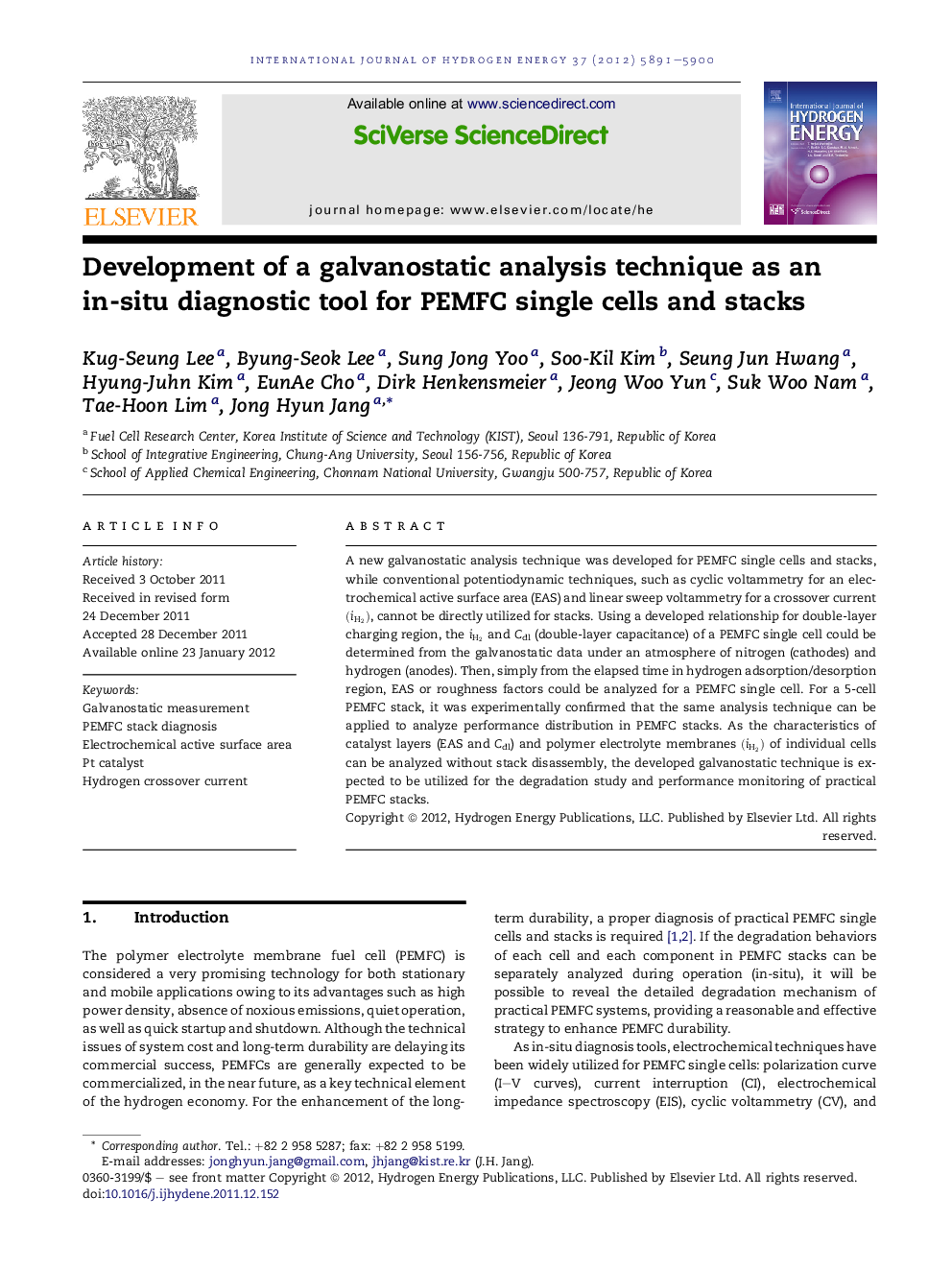| Article ID | Journal | Published Year | Pages | File Type |
|---|---|---|---|---|
| 1276881 | International Journal of Hydrogen Energy | 2012 | 10 Pages |
A new galvanostatic analysis technique was developed for PEMFC single cells and stacks, while conventional potentiodynamic techniques, such as cyclic voltammetry for an electrochemical active surface area (EAS) and linear sweep voltammetry for a crossover current (iH2)(iH2), cannot be directly utilized for stacks. Using a developed relationship for double-layer charging region, the iH2iH2 and Cdl (double-layer capacitance) of a PEMFC single cell could be determined from the galvanostatic data under an atmosphere of nitrogen (cathodes) and hydrogen (anodes). Then, simply from the elapsed time in hydrogen adsorption/desorption region, EAS or roughness factors could be analyzed for a PEMFC single cell. For a 5-cell PEMFC stack, it was experimentally confirmed that the same analysis technique can be applied to analyze performance distribution in PEMFC stacks. As the characteristics of catalyst layers (EAS and Cdl) and polymer electrolyte membranes (iH2)(iH2) of individual cells can be analyzed without stack disassembly, the developed galvanostatic technique is expected to be utilized for the degradation study and performance monitoring of practical PEMFC stacks.
► A new galvanostatic analysis technique was developed for PEMFC stacks. ► The characteristics of individual cells can be analyzed without disassembly. ► EAS and double-layer capacitance can be measured for each catalyst layer. ► Hydrogen crossover current can be measured for each polymer electrolyte membrane. ► This technique can be used as an in-situ diagnostic tool for PEMFC stacks.
